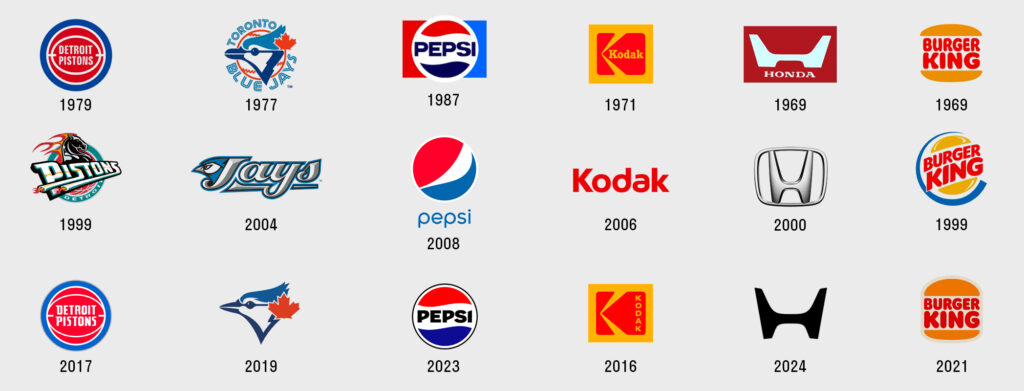The work we do at The Barn of Brands is always striving towards strategic marketing goals. One of those goals is to create fans of the companies we work with.
Fans of your brand are the people who stand by your products and services through the ups and downs. They cheer on your successes and celebrate your big wins while helping you build a loyal following that endures for years.
True fans become repeat customers and are passionate about what you do and what your organization offers.
Sound familiar? Professional sports teams often inspire a similarly passionate and supportive fanbase. When teams are delivering on the promise of championships and trophies, their fans are on their feet cheering for these triumphs. When the team falls short, fans are still there to let them know that they are disappointed but will still root for them to do better next time.

People are willing to line up outside of large venues and crowd into arenas to cheer on sports teams and learn about the latest products from tech companies.
Sports teams give us a magnifying glass to look at branding and marketing at a hyper-focused level.
We don’t expect fans of the companies we work with to paint their faces in your corporate colors or fly a company flag on the front of their home. But sports branding and marketing offers a unique (albeit sometimes extreme) look at how the decisions we make can affect even the most loyal customers’ brand view. It also provides insights into the possible risks and rewards of making drastic changes to a brand.

Let’s take a look at a few key areas in which sports teams can offer some insight into how the relationship between brands and fans translates in the marketing world.
Building a Stalwart Fanbase
Sports teams garner almost unwavering support from their fans, even when times are tough and the team is struggling.
It is rare that fans change team affiliations because of a bad game or even a bad year. When things are going well, fans can be counted on to be enthusiastic ambassadors for the team, sharing their passion with everyone around them.
Across other industries and markets, every company can benefit from having a fanbase that will help spread the company’s message. Just like sports teams equip their fans with branded merchandise and messaging to show their team pride, companies can give their customers a brand toolkit that helps them share their fandom.

Of course, offering quality products and services is critical to any marketing strategy. But paired with a campaign that includes well-crafted messaging, engaging social media content, and consistent communications with customers about new products and services, fans will be motivated to keep showing up to cheer for those new offerings.
Being Consistent
Most professional sports teams have a brand identity that is instantly recognizable to fans.
Whether it’s the iconic green and yellow of the Green Bay Packers or the interlocking “NY” and pinstripes of the New York Yankees, these teams have built their brands around a consistent visual identity that has become synonymous with their success on the field.
In marketing and branding outside of sports, consistency is equally important. Whether we are designing a logo, developing a social media strategy, building a website or creating ad campaigns, it is crucial to maintain a consistent brand identity across all channels.
This consistency applies to every facet of the brand system, including messaging, slogans & taglines, copywriting, user experiences, and tone of voice.
Using Nostalgia to Create Emotional Brand Connections
Sports teams excel at revitalizing old logos, team colors, slogans, and other brand identity assets.
Legacy brand elements are often seen by fans with a sense of nostalgia, especially if the era of those designs marked memorable moments in team history like past championships or seasons with franchise players.
Teams often produce new merchandise with legacy branding, referred to as “throwback” products. Team colors from past years are brought back for special games, items and promotions.
The New Jersey Devils are known today for their black and red colors, but in the 1980s they sported a red and green colorway that is sometimes revived for throwback merchandise like vintage-style team jerseys.

Across non-sports markets, we have seen this done successfully with companies that embrace legacy brand elements such as retro logos, colors, or messaging.
Pepsi recently went back to using a logo design that originated in the 1960s and had been out of use since 1991.
In 2021, Burger King redesigned their logo based on a version that they had stopped using more than 20 years prior.
Knowing Your Customer
Sports teams are usually reluctant to make major branding changes based on trends.
Many current team logos feature designs that have changed very little over several decades, and teams are often hesitant to change their logos as often as companies in other markets do because they understand their customers’ unique love for the brand.

It is that deep knowledge of their customers and their lasting appreciation and loyalty to the team that brand managers use to make decisions about when and how to make any significant branding changes.
Teams also realize that their customers have made personal investments in team branding with the purchase of merchandise bearing the current team logo.
A goods or services company can redesign its logo without the change having any serious impact on products already in circulation. A sports team doing the same thing would leave customers with team merchandise that could be seen as out of date and inconsistent with the brand visuals the players are wearing.
Knowing your customers and what they love about your brand is crucial information that sports teams excel at capturing and understanding. This data drives strategies that can help teams and companies make better brand decisions and avoid branding pitfalls.
Considerations
Intent matters. Why are you considering a change to your brand? And how will your customers perceive that change?
Fans will be far more likely to embrace the changes you are making if they see that the intent is to elevate the brand and celebrate the best parts of it, past or present.
They will rally around legacy visuals in a nod to past successes or cheer on your introduction of a new design, messaging, or strategy that moves the brand forward in ways that align with what they have always loved about your products and services.
If your intent in altering any brand visuals or messaging is simply to jump on a trend, however, the benefits of that may be short-lived. Aim for longevity with branding that lasts and supports a consistent message over time, allowing your fans to grow with the brand instead of being left behind by it.
Helpful Resources
Opinions on corporate and brand identity work, including recent logo redesign projects
(Logo) Crimes and Misdemeanors
Logo designs that missed the mark

